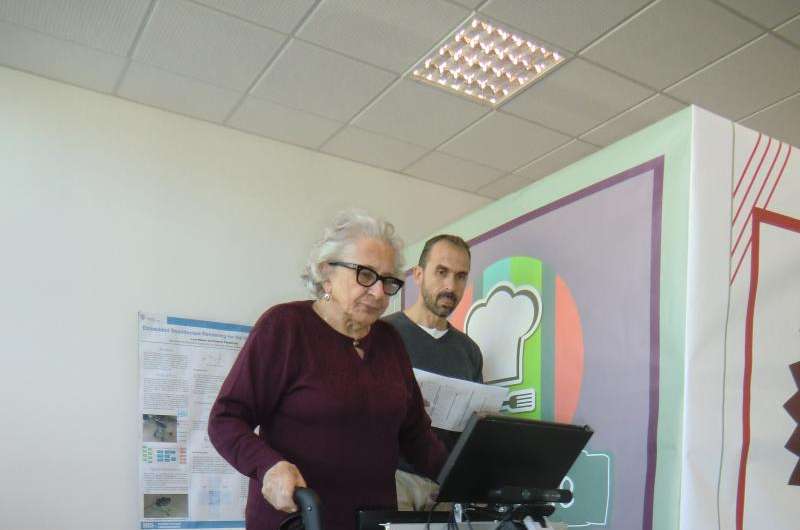Robot walker for elderly people in public spaces

Elderly people with walking difficulties are often intimidated by busy public places. This led an EU research project to develop a robot walker to guide them around shopping centres, museums and other public buildings, thus enhancing their autonomy.
Shopping centres, airports, museums and hospitals are the kind of complex and confusing environments where elderly people on the verge of cognitive decline could have difficulties walking around without help. The walking frames they may currently use do not have the flexibility to help them navigate in often-crowded places.
This led researchers on the DALI project to develop a robotic cognitive walker (c-Walker) that can be taken to, or picked up at, the place to be visited, gently guiding the person around the building safely. The device takes corrective actions when the user comes across the type of busy area, obstacle or incident they want to avoid.
'The c-Walker is aimed at providing physical and cognitive support to older adults. It can give them confidence in public environments,' explained Luigi Palopoli, professor at Italy's Trento University who coordinated DALI (Devices for Assisted Living). 'The device is full of hi-tech solutions, but the user is not necessarily aware of them. She or he comes into contact with a 'standard' walker, with a few additions such as the display or bracelets and does not need any kind of computer literacy. The robot simply guides them so that they have a nice, safe experience.'
Programming the robot before setting off
Shopping is recommended as a useful way for elderly people to exercise and is viewed as an important activity for prolonging their autonomous mobility. It also provides them with good opportunities to interact socially. For these reasons, shopping centres were considered by the DALI project to be a typical environment an elderly person would ideally visit. Picking up the c-Walker at the entrance, the elderly shopper selects the profile most suited to them on its simple touch-screen and the shops to visit. The c-Walker then recommends the best course to the user and guides them using visual, acoustic and haptic (tactile) interfaces.
The c-Walker uses different solutions (RFID tags, invisible QR codes, and cameras) to localise itself in the environment. Furthermore, it can connect with remote sensors, such as surveillance cameras, and with other c-Walkers deployed in the environment to gain remote knowledge of the presence of anomalies, crowded spaces or hazards. The device is equipped with brakes and motorised wheels. Haptic armbands tell users when and how to turn. They can also call for assistance if necessary.
DALI has been very much a user-driven project. The scientists spoke with focus groups of over 50 elderly people in Spain and the UK who explained their mobility needs so that features helping them could be incorporated into the robot. The c-Walker was later tested at residential care homes in Ciudad Real in Spain and Trento in Italy. Feedback from these trials was used to design a more advanced prototype.
By basing the design on software rather than expensive mechatronic components, the DALI consortium has been able to bring unit cost down from tens of thousands of euros to around EUR 2 000 per device.
Stepping out through social networks
DALI, funded with EUR 3 million from FP7, ended last October. But now there is a new three-and-a-half year project, ACANTO, which is developing the c-Walker further. ACANTO, receiving EUR 4.2 million from Horizon 2020, aims to bring c-Walker users together in social networks. 'This will give them more incentive to go places,' said Prof Palopoli. 'While in DALI we focused on the single user, in ACANTO we are thinking of groups of users who can do things together, such as visit a museum.'
The consortium believes that, by spinning off a company to market the device, or attracting investment from a major technological manufacturer, c-Walkers could be in common use by 2020.
Provided by CORDIS




















